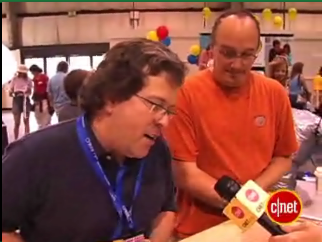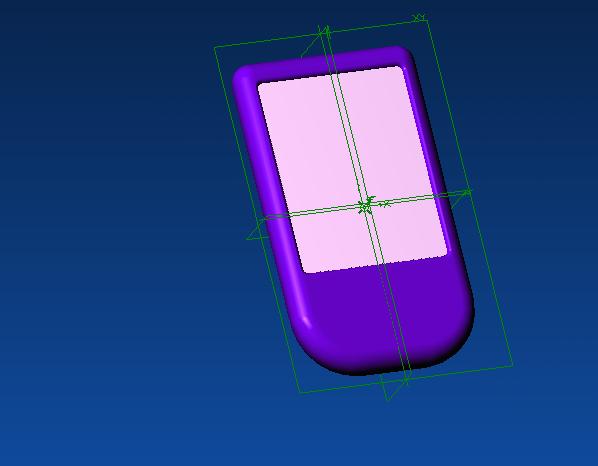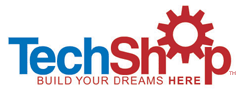Main Page
Welcome to the Homebrew Mobile Phone Club Wiki...

News and Events
We (Matt and Adrian) got our LCD screens working with the GumStix Verdex and the ConsoleLCD-VX. I've documented the procedure at the Getting the ConsoleLCD-VX Working page.
The next meeting will be in October, probably at the TechShop on the 10th.
The "official" calendar of the Homebrew Mobile Phone club is hosted by Google at The Homebrew Mobile Phone Club Calendar Page.
Projects
Homebrew Club members are encouraged to post information about their projects (or other people projects) here.
What is a mobile phone? lists the things people want to do with a mobile phone.
One project that's been relatively sucessful is the TuxPhone Project. TuxPhone was started by Surj Patel and Deva Seetharam and quickly attracted Matt Hamrick, Colin Cross and Leonardo Bonanni. The goal of the TuxPhone project is to produce a design that can lead to a "do it yourself" mobile phone; not just for the project members, but for anyone who wants to use the design.
Another project we're tracking is the SqueakyMoPho Project. SqueakyMoPho was Matt Hamrick's original concept for building a Linux-based mobile phone where application and UI code was written in Smalltalk. The project is now on semi-hiatus while Matt works on TuxPhone and Albion. But the "Franken-Phone" GSM Peripheral used to test the SqueakyMoPho software is still in active development. Matt has a "How to Build Your Own USB-Based GSM Peripheral" at the bottom of the SqueakyMoPho Project page.
The Albion Project is a hardware project to build a phone that uses a fully digital audio path. The idea being that the digital audio path will allow you to add features like "Data over GSM Voice" for vCard bursting.

While the initial TuxPhone design is just a simple phone that makes calls, there is a lot of interest in a high end open smartphone that extends the TuxPhone design to a large touchscreen format. This is one design called OpenCell being produced at Florida Tech, and a flexible design called myPhone being developed by SVHMPC members. Everyone who builds one can customize it to their own needs and desires.
If you just want open software for a phone that has a fixed/closed design (including components that require manufacturer NDA agreements to be signed), then the Trolltech Greenphone started shipping to developers in December 2006, and the OpenMoko FIC Neo1973 should ship in March 2007. The software framework for the Greenphone is Qtopia based, and OpenMoko is GTK+ based. For more information, read the comparison of GUI Frameworks.
All the above designs should be sharing software at some level.
Resources
Geographically distant persons are also encouraged to participate in discussions on the mailing list or (if you're adventurous) you can form your own local chapter. You can sign up to the mailing list or read the archives here. There is currently no formal national or international membership organization, so starting a local chapter is as simple as finding a few interested people, deciding on a time and location for the meeting and showing up. A Homebrew Mobile Phone Club Frappr Group has been created to make it easier to find people with similar interests in your area.
Software
There are several projects working on various aspects of Linux based open phone software, and we are collecting information on sources and experiences on a open mobile software page.
Hardware
Please visit the Hardware page for a list of useful-looking hardware components. This page is intended to be a brain-dump of what people have looked for their phone design. For information on what hardware a particular project uses, visit the project's page (E.g. MyPhone).
Suppliers
Click here for UK Suppliers
GSM Modules
- SparkFun
- SparkFun supports several different electronic hobbyist communities. They provide eval boards and accessories for a number of different hardware architectures. We like them because they will sell Telit GSM modules in single quantities and with USB to Serial eval boards.
Embedded Controllers
- GumStix, Inc.
- GumStix manufactures and sells small ARM based embedded systems for experimenters, hobbyists and companies building small-run systems. Several price-performance points are supported (meaning they have cheaper, slower modules and faster, more expensive modules.) Support for sound, networking, etc. is provided by daughter-boards. GumStix are used by a number of projects and are part of the initial TuxPhone hardware reference design.
Developers should note, however, that typical GumStix systems do not ship with LCDs. GumStix CTO Chris Hughes explains that the company received radically different LCD requirements from their customers, and they could never find a "one size fits all" solution. However, all the control lines for supporting modern LCDs are provided by the system's standard Hirose connector and the LCD page on GumStix.Org lists the steps to connect typical LCDs to the device.
Also note that GumStix has publicly announced they're working on a GSM gumstix peripheral based on the Siemens MC75 module. So fairly soon you should be able to build your own mobile wireless communication device with EDGE support. w00t!
Displays
- EarthLCD
- When you need to connect an LCD display to your design, the folks at EarthLCD can help out. They stock a wide range of LCDs and controllers.
- Sharp 4.3" Display specification
- This is the Sony PSP display that some of us are using to build myPhone.
- Cellular Nationwide Network
- These guys look to be an online retailer of surplus or factory seconds for mobile phone parts. They carry cases, LCDs, keypads and a number of other odds-n-ends. My (User:Msh) experience with them is mixed. My first order with them was filled promptly and everything arrived in reasonable time. My second order was less exciting, 36 hours after having my credit card charged, I got an email saying, "sorry, we really don't have that part in stock." I received a refund, but it was a might annoying to have to find another supplier.
Discrete Components
- DigiKey.Com
- With a catalog the size of a phone-book, DigiKey is well known in the hobbyist and entrepreneureal communities as being a highly reliable source for everything from resistors to project enclosures.
- Mouser Electronics
- With a catalog the size of a small phone-book, Mouser is also well known amongst hobbyists, hackers and prototypers.
- Jameco Electronics
- Jameco is yet another supplier of small components for people working on electronics projects.
- Anchor Electroncs
- Persons in Silicon Valley looking for that last minute part may want to visit Anchor Electronics. Their store-front is at 2040 Walsh Avenue Santa Clara, CA. 95050. Their catalog indicates they have a reasonably wide selection of surface mount and through-hole components, ICs, boards, etc. They can also be reached via telephone at +1.408.727.3693.
- HSC Electronic Supply
- A SiliValley standard for decades, "Halted" has a strange mix of parts and supplies. They have a reliable selection of nuts, bolts, PCB supplies (save solder paste), and a wide (though not complete) selection of resistors, diodes, etc. They're at the corner of Lawrence and Central in Santa Clara, so if you ever get the desire to go to Fry's in Sunnyvale, go here instead. 3500 Ryder Street, Santa Clara, CA 95051, +1.408.732.1573
- Surface Mount Center
- If surface mount components are what you're looking for, consider the Surface Mount Center. Their store-front is at 1580 Oakland Rd # C114, San Jose, CA 95131 and their phone number is+1.408.453.2023.
- µCPros Corporation
- Their name pretty much says it all. They're apparently in Morgan Hill, but they have no store-front, so orders would be handled primarily on their website.
Support
The Homebrew Mobile Phone Club gratefully acknowledges the kind support of the TechShop and GumStix. Thanks to these organizations, we're able to make our dreams solid.

